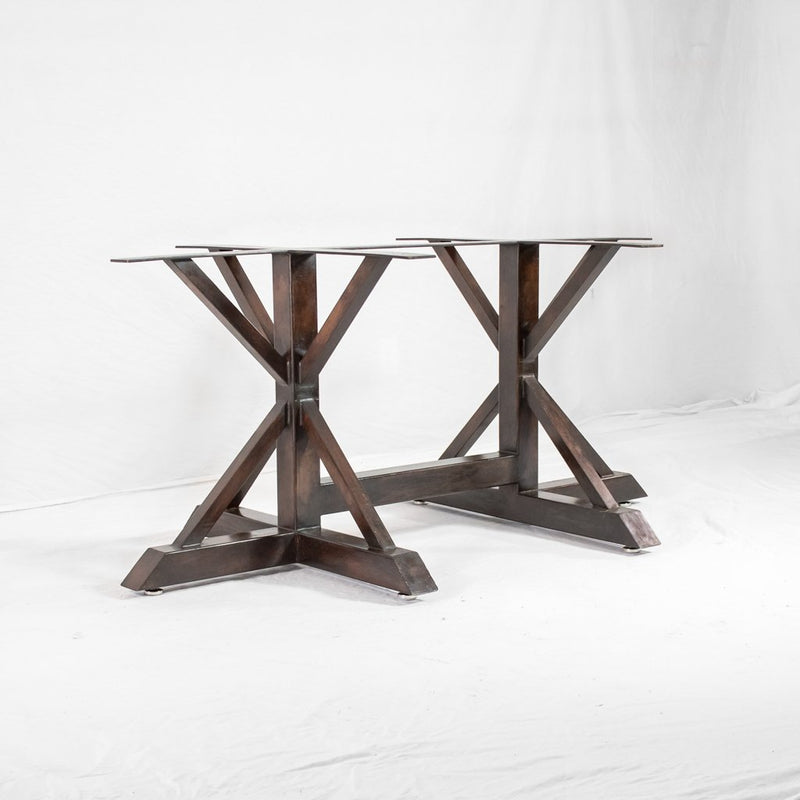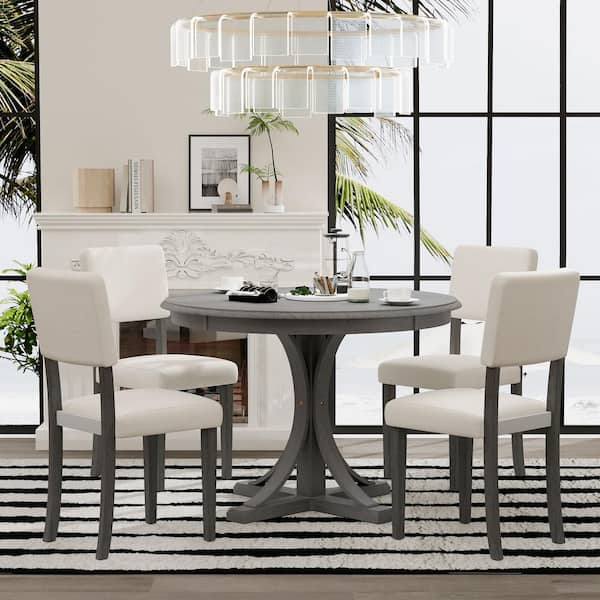Exactly How to Pick the Perfect Dining-room Table Legs for Your Home Design
Picking the suitable dining-room table legs is a nuanced procedure that calls for mindful consideration of various aspects, including your room restraints, aesthetic preferences, and useful requirements. The interaction in between products, designs, and measurements can significantly influence the ambiance of your eating location, making it vital to approach this decision methodically. As you contemplate the myriad options available, it comes to be clear that the appropriate selection expands past simple look; it can enhance your overall eating experience. What elements should you focus on to guarantee your choice matches your home's one-of-a-kind personality?
Assess Your Eating Space
Evaluating your eating area is critical for choosing the right table legs that match both aesthetics and capability. Begin by determining the dimensions of your eating area, consisting of ceiling elevation, flooring space, and distance to other furnishings. This information will certainly aid determine the proper size and elevation of your table, which directly affects the choice of table legs.
Following, consider the style and design of your eating area. For instance, an open-concept design might gain from table legs that offer visual agility, such as slim steel or acrylic alternatives. Alternatively, a more conventional setup could ask for durable wood legs that provide a sense of permanence.
Review the existing shade combination and materials in your dining area. Harmonizing the table legs with these elements creates a natural appearance that improves the overall design.
Ultimately, a complete evaluation of your dining space will assist you in making an educated decision, guaranteeing that your table legs not only boost the aesthetic charm but also offer sensible objectives.
Consider Your Style Preferences
When choosing dining-room table legs, it is vital to review your individual design preferences, as they considerably affect the overall aesthetic of your eating room. Your choice of table legs can either complement or comparison with existing design, making it vital to straighten them with your recommended interior layout motif.
If your home leans towards a contemporary aesthetic, consider streamlined metal or minimal wooden legs that give a clean, clean appearance. For a much more conventional strategy, elaborate wooden legs with elaborate carvings can add a touch of elegance and refinement. Industrial styles gain from robust, raw materials such as reclaimed timber and steel combinations, mirroring a tough beauty.
In addition, farmhouse and rustic designs frequently prefer sturdy, beefy legs that stimulate a sense of warmth and convenience. On the other hand, if your décor is diverse, you might select unconventional shapes or a mix of products to create visual passion.

Evaluate Material Options
The choice of material for eating space table legs plays a crucial role in both sturdiness and visual allure. Typical products consist of timber, steel, and composite alternatives, each offering distinctive characteristics that can influence the total appearance and longevity of your table.
Wood is a classic choice, known for its warmth and flexibility. Woods like oak and walnut provide extraordinary stamina and can be completed in different spots to match any design. Nevertheless, softwoods like want are a lot more susceptible to dents and scratches, making them less perfect for high-traffic areas.
Steel legs, typically crafted from steel or aluminum, exhibit modernity and industrial appeal. They are immune and extremely original site resilient to put on, making them ideal for households with kids or frequent celebrations (dining room table legs). In addition, metal can be finished in numerous colors, enhancing the personalization opportunities
Composite materials, such as MDF or laminate, offer affordability and diverse layouts. While usually less long lasting than strong wood or metal, they can still give a fashionable appearance and are frequently very easy to preserve.
Inevitably, the product you choose need to line up with your way of living, visual preferences, and the degree of usage your eating table will experience.
Determine Elevation and Size
Choosing the appropriate elevation and size for your dining area table is necessary for both functionality and convenience. The basic elevation for dining tables usually ranges from 28 to 30 inches, permitting ample legroom for a lot of individuals when seated. It is essential to consider the measurements of your eating room and the types of chairs you prepare to make use of.
Additionally, view website think about the percentages of your dining-room. A bigger table in a sizable location can develop a grand ambiance, while a smaller table functions well in even more intimate setups. Inevitably, the appropriate elevation and dimension will certainly integrate with your total style and boost the eating experience for you and your visitors.
Explore Customization Possibilities

In addition, the style of the legs can be customized to fit various designs, such as rustic, contemporary, or industrial. Tapered legs can stimulate a mid-century contemporary feeling, while chunky, block-style legs may reverberate with conventional or farmhouse decor.
Home owners can likewise discover color coatings, from natural timber stains to repaint, allowing them to match or contrast with the tabletop and bordering design.
Moreover, leg height can be adapted to accommodate details seating plans or Bonuses individual preferences, boosting both comfort and capability.
Lastly, one-of-a-kind embellishments, such as makings or decorative brackets, can better personalize the table legs, making the eating experience not simply a declaration but a dish item in the home. By thinking about these modification options, house owners can develop a dining-room table that truly reflects their uniqueness.
Verdict
Selecting the suitable dining-room table legs needs cautious consideration of numerous factors, including the dimensions of the eating room, design preferences, material sturdiness, and wanted height. Personalization alternatives better enhance the ability to accomplish a cohesive aesthetic that matches the total style. By systematically assessing these aspects, house owners can make sure that the picked table legs not just meet useful needs yet additionally contribute positively to the eating experience and ambiance of the home.
Picking the perfect dining room table legs is a nuanced process that calls for cautious factor to consider of numerous components, including your room restraints, visual preferences, and useful requirements.Evaluating your eating room is critical for picking the right table legs that enhance both visual appeals and functionality.When determining dimension, determine the area where the table will certainly be placed to guarantee it fits pleasantly, enabling for at least 36 inches of clearance around the table for easy activity. A bigger table in a roomy area can develop a grand atmosphere, while a smaller table works well in even more intimate settings.Selecting the excellent eating room table legs calls for cautious consideration of numerous aspects, including the measurements of the dining space, design preferences, product toughness, and preferred height.